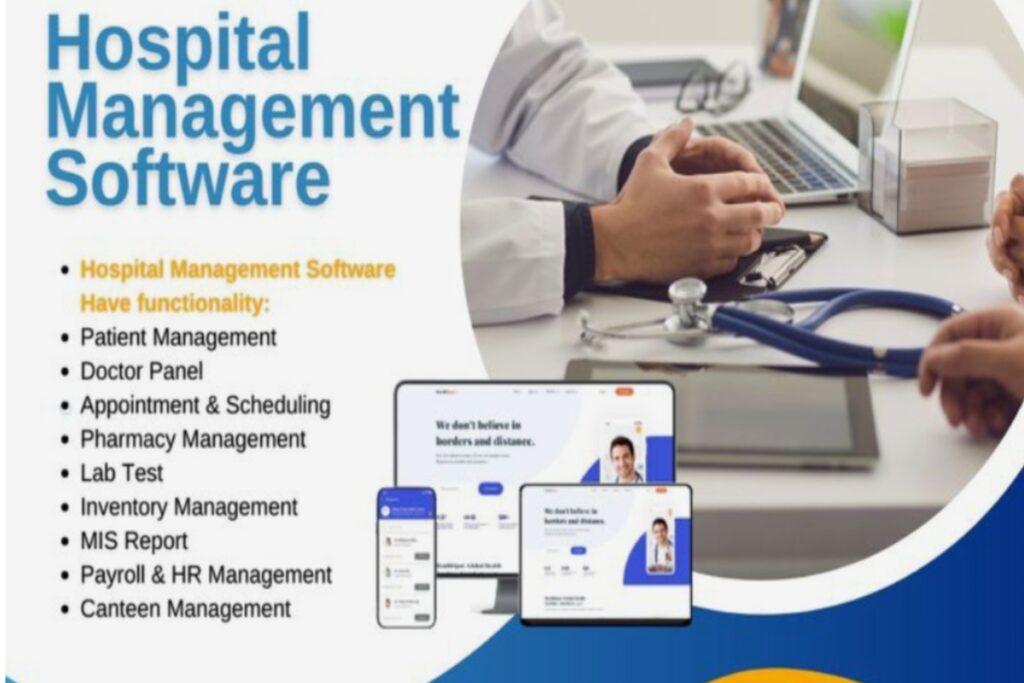Step 1: Understand Kerala’s Healthcare Landscape
Kerala’s healthcare sector includes government hospitals, private institutions, and Ayurvedic centers, serving urban and rural populations. Key considerations:
- Tech-Savvy Population: High mobile penetration and digital literacy favor HMS adoption.
- Medical Tourism: Hospitals in cities like Kochi and Thiruvananthapuram require multilingual and efficient systems.
- Ayurvedic Integration: Support for traditional medicine modules is essential.
- Government Initiatives: Align with programs like eHealth Kerala and Karunya Arogya Suraksha Padhathi (KASP).
Step 2: Conduct a Needs Assessment
Identify institutional requirements through:
- Stakeholder Workshops: Engage doctors, administrators, and IT staff.
- Workflow Analysis: Map OPD/IPD processes, pharmacy, lab, billing, and inventory.
- Specialty Needs: Custom modules for oncology, cardiology, or Ayurveda.
- Compliance: Adhere to Kerala Clinical Establishment Act and national standards (NABH, HIPAA).
Step 3: Choose Core HMS Features
Prioritize modules that address Kerala’s demands:
- Patient Management:
- Multilingual registration (Malayalam/English).
- EMR integration and telemedicine support.
- Clinical Modules:
- Ayurvedic medicine tracking.
- Diagnostic lab and radiology interfaces.
- Administrative Tools:
- Insurance claim processing (e.g., Karunya Health Scheme).
- GST-compliant billing and pharmacy stock alerts.
- Analytics: Real-time dashboards for disease surveillance (critical during monsoon outbreaks).

Step 4: Select the Right Vendor
Evaluate vendors based on:
- Local Expertise: Firms like QSS or Techsol Systems understand Kerala’s ecosystem.
- Customization: Ability to integrate with Kerala’s government health portals.
- Support: 24/7 assistance in Malayalam.
- Cost: Opt for scalable pricing models (e.g., subscription-based for rural clinics).
Step 5: Plan Implementation Phases
- Infrastructure Setup:
- Deploy cloud-based servers for urban hospitals; offline modes for rural areas.
- Ensure compliance with Kerala’s data localization policies.
- Configuration:
- Customize templates for Ayurvedic treatments.
- Integrate with local lab/diagnostic centers.
- Testing: Validate workflows via pilot runs in specific departments.
Step 6: Training and Change Management
- Localized Training: Conduct sessions in Malayalam using real-world scenarios.
- Role-Based Modules: Tailor training for doctors (EMR usage) and billing staff.
- Feedback Loops: Assign super-users to address post-training queries.
Step 7: Data Migration
- Legacy System Audit: Convert paper records (common in rural clinics) to digital formats.
- Validation: Ensure accuracy of migrated patient histories and insurance data.
- Backup: Use secure servers compliant with Kerala’s DPDP Act guidelines.
Step 8: Ensure Regulatory Compliance
- Kerala Specific: Adhere to state clinical guidelines and KASP insurance protocols.
- National Standards: Implement Aadhaar integration for ABHA Health IDs.
- Security: Encrypt data and conduct regular audits.
Step 9: Go-Live and Monitoring
- Phased Rollout: Start with OPD, then expand to IPD and labs.
- 24/7 Support: Partner with vendors for immediate issue resolution.
- Performance Metrics: Track patient wait times and billing accuracy.
Step 10: Post-Implementation Support
- Updates: Regularly upgrade modules (e.g., new Ayushman Bharat directives).
- User Feedback: Optimize workflows using staff suggestions.
- Annual Audits: Ensure alignment with evolving healthcare policies.
Benefits of HMS in Kerala
- Efficiency: Reduced paperwork and faster insurance processing.
- Patient Care: Telemedicine bridges urban-rural healthcare gaps.
- Revenue Growth: Automated inventory cuts costs by 20–30%.
Challenges and Solutions
- Connectivity Issues: Offline HMS modes for remote areas.
- Staff Resistance: Continuous training and incentives for digital adoption.
- Budget Constraints: Leverage government subsidies for small hospitals.
Future Trends
- AI-Driven Diagnostics: Predictive analytics for disease outbreaks.
- Interoperability: Integration with national portals like Ayushman Bharat Digital Mission.
- IoT: Wearable devices for chronic disease management.
Conclusion
Adopting HMS in Kerala enhances healthcare delivery, aligns with digital India goals, and strengthens the state’s reputation as a medical hub. By following this guide, hospitals can navigate implementation challenges and leverage technology for superior patient outcomes.
Call to Action
Kerala’s hospitals must prioritize HMS adoption to stay competitive. Start with a needs assessment, collaborate with local vendors, and embrace a phased rollout for seamless digital transformation.

